
A beautiful home is everyone’s dream. According to ‘Stewart & Sally Walton’ (Authors of the book called “The Complete Home Decorator”) – Decoration, Colour and Design are essential factors for the modern home in the twenty-first century. One of the joys of decorating home with paint is that, that it is an opportunity for you to experiment with colour while expressing and enjoying your personal preference.
To understand in detail about paints, let us begin with its basic:
Colours:
Paints are associated with different colours. So then, what are colours? ‘Colour’ is generally defined as the property acquired by an object of producing different sensations on the eye as a result of the way it reflects or produces the light.

Colour is an essential component of visual experience. It is the specific perceptual characteristics and the impact of visual experience that we classify this experience and refer to it with various colours namely; orange colour, green colour etc. The world around us is full of colours. Every day we see a lot of different combinations of colours that surprise us.
However, have you ever noticed that colour can affect your mood?
The study of psychology says that different colours have different impact on our mind! Yes, colours in your home can affect your mood. Some colours can trigger and uplift your mood; some can make you feel warm; whereas some can give you the feeling of peace and coolness. Therefore, painting plays a significant role in decorating your home. It is something that is never out of fashion nor goes outdated. Painting in each room not only upgrades the look of your home but it adds to the freshness and newness of it.
Let us understand everything about the paint and why it is important.
What is Paint?
For most of the people, paint is the colour on walls, timber, metals, and bricks, outside or inside the surfaces of their house. From the layman’s point of view, paint can be the colour of their car, or boat or any other object or elements that they come across in their routine life. It is a substance that is used as a final finish to all the surfaces as a coating to protect or decorate the surface.
According to ‘Christopher Gorse’, ‘David Johnston’ and ‘Martin Pritchard’ (Author of Oxford Dictionary of Construction, Surveying & Civil Engineering), Paint is a method of applying a thin coating of material to the surface of another solid or structure. It is applied in liquid form, which then becomes solid before being put into service.
Paint is an opaque pigmented material that completely covers and hides the surface on which it is applied. After it dries, it forms a thin film on the painted surface, i.e. walls and other components of the house or any other object.
Paint is more than just a colour which is applied as a liquid to any given surface. Paint dries because of various chemical processes taking place into a solid layer on surfaces.
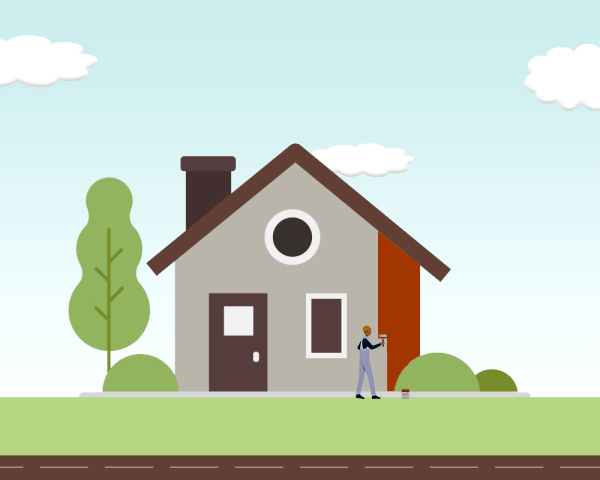
Purpose of Paint
Well, painting a house serves many purposes. One of the important purposes of applying paint is that, it can give the feeling of newness and freshness in both the old as well as the new houses. The various purposes of paint are:
01. Protection
Paint protects the surface from weathering effects of the atmosphere and actions by other gases, liquids, fumes etc. It protects the wall, roof, ceiling, railings, furniture, doors, windows, etc. Paint also protects the house from the effect of sun and rain apart from giving a soothing and better feeling.
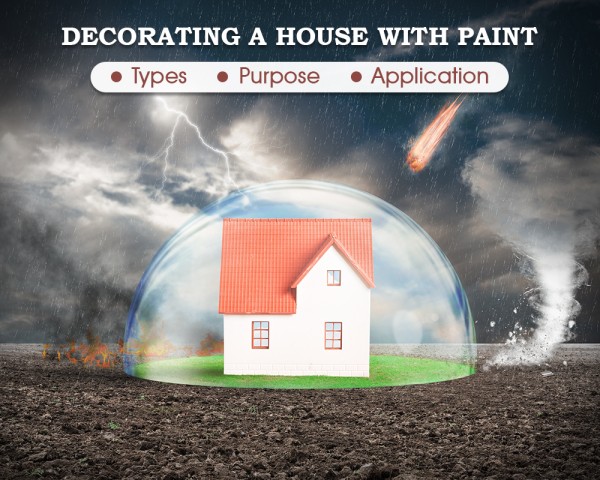
02. Aesthetics
Beautiful paint enhances the overall look of your home. As far as your home is concerned, generally you will be required to paint four fundamental components – walls, ceilings, metal and wooden surfaces. The painted surface of any of these components can increase the aesthetic value and beautify the painted surface and of course, the home as a whole.
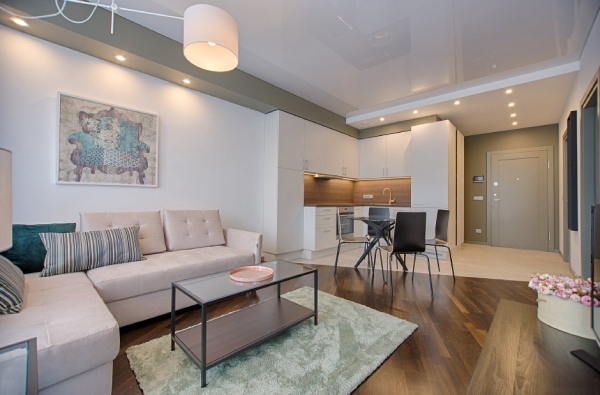
03. Identification
A paint can be transformed or reformed into a variety of colours, if it is mixed properly and proportionately with a pigment. A paint applied on the exterior of the house can provide a distinctive look to the exterior of your home. Many a times, such houses become a landmark in that particular street or in that area and helps in identification.
04. Joy of Living
A newly painted home apart from newness, cleanliness and sense of freshness gives a sense of completion and satisfaction. Depending upon colours applied in the home, it helps in uplifting and activating several moods like coolness, excitement, calmness and such other varied feelings.
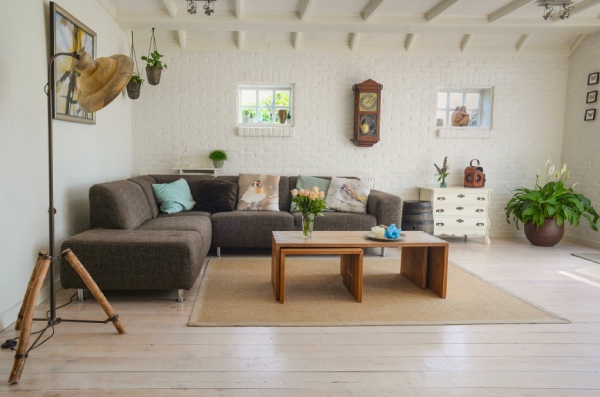
05. Long Life
Corrosion is very common with most of the metals. It is the main culprit that reduces life and serviceability of metals. Paint can prevent decay and corrosion in metals. Longevity of metals can be achieved by applying a special paint on them.
06. Hiding the Surface and Absorption of Ultraviolet Radiation
The advantages associated with the paint is, it can,
- Hide to a greater or lesser degree the underlying surface.
- Enable coating to perform functions such as inhibit corrosion or absorb ultraviolet radiation.
Now let us look into the technical aspect of the paint.
Basic Components of Paint
Paint is manufactured by mixing various ingredients in suitable proportions. Each paint component is responsible for giving the specific quality to the paint.
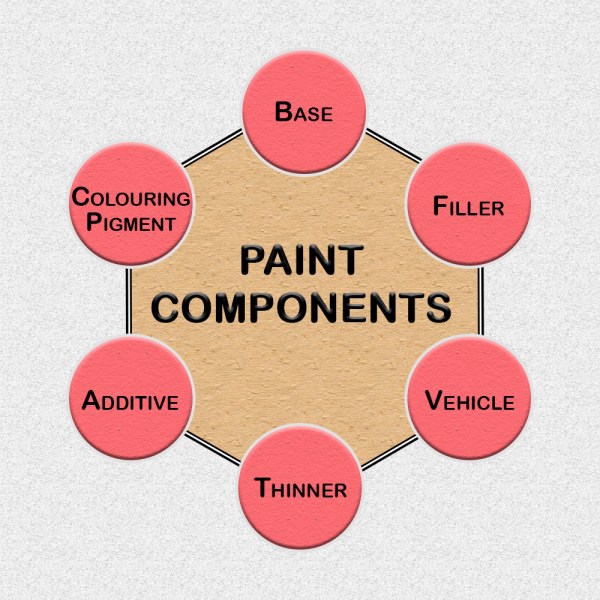
The main constituents of paints are given below:
01. Base
The base is a solid substance in a fine state that forms the body of paint. A base form a foundation for a colour.
For More Detail about Base, read
02. Filler
Filler is a cheap pigment added in a paint to modify the weight of the paint and make it more durable. It will also save the cost of base.
03. Colouring Pigments
The function of pigment is to impart a basic colour to the paint.
For More Detail about pigment, read:
04. Binder or Vehicle
Binders are the materials that bind and hold the pigments together and fix it to the surface being painted.
According to ‘M M Goyal’ (Author of the Book called Construction Handbook for Civil Engineers and Architects), theoretically, pigments and binders’ mixture can protect the surface without the help from other auxiliary materials. Still, such a film will be short-lived and ineffective. Therefore, solvent and additives are also required.
For More Detail about Binder, read:
05. Solvent or Thinner
A solvent is used for thinning paints to a working consistency and for dissolving resin binders in the manufacture of paints. Solvent gives the paint fluidity and enable it to be applied on a given surface.
They help in wetting the surface and contributing to adhesion by penetrating in pores and crevices and taking the paint with them. The solvent also plays a role in laying down uniformly thick films of coatings and they even act as a cleaning agent.
Solvents or thinners are volatile substances, added to the paint for the following reasons:
- They make the application of paint easy, smooth and helps the paint spread evenly.
- They give the desired consistency to the paint.
- Solvent or thinner helps the paint in penetrating through the porous surface. Thus, they increase the spreading power of paint.
- They quickly evaporate during the drying of the film.
The common solvents used in the paint are petroleum, spirit, naphtha & turpentine oil. The spirits of turpentine are the most common thinner used in practice. Turpentine is combustible and evaporates rapidly, consequently dries the oil quickly.
06. Drier
The function of drier is to accelerate the process of drying.
For More Detail about Drier, read:
07. Additives
Huge technological strides in polymer chemistry have now made it possible to have paint systems whose life extends from five years onwards up to 20 years. Additives, here, have a major role to play. Additives are the useful materials used in the coatings so as to make this polymer system. They prevent foaming in water-thinned paints and impart unique properties like resistance to fungus and rust to paint.
Some of the additives used in coatings act as an anti-gelling agent, anti-skinning agent, coalescing agents, driers, Defoamers, Emulsifiers, pigment wetting agents, preservatives etc.
If you want to understand simple white wash or colour wash, the ingredients can be identified as follows:
- Basic lime is the base.
- Lime being cheap does not require any filler enhance. Lime being cheaper, it is also easily available.
- ‘Indigo’ is a pigment used to give blue colour to the lime. Now a days many chemical pigments are available.
- Fevicol or saresh (Glue) is used as binder.
- Water is used as a solvent.
- In routine white washing, no driers or additives are used.
If you want to know more details about Paint Component, Read:
Paint Application
Satisfactory painting and transparent finishing depend on various factors such as, the proper selection of paint, transparent finishing material, adequate preparation of surfaces and suitable application method and procedures.
The four standard methods of application of paint are:
01. Paint by Brush Application
Applying paint through brush is the most common method of applications of paints. It is done by skilled hands. Brushes are flexible and easy to handle. Application by brush gives a textured effect to the painted surface. A substantial advantage of using a paint brush rather than roller or spray equipment is that, its bristles force the paint into all the nook’s corners and imperfections of the surface. It is also suited for smaller and detailed areas like corners, edges, trim, moulding and odd shapes.
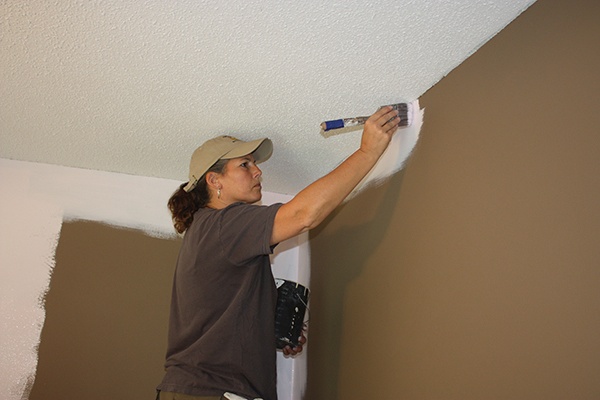
02. Paint by Roller Application
Roller application requires relatively less skill than a brush. It is generally preferred while finishing a large area such as a wall or ceiling, a paint roller can apply paint almost as quickly as a power sprayer. It costs far less and does not generate messy overspray. Using a paint roller requires several components like a roller frame (handle), a roller cover and paint tray.
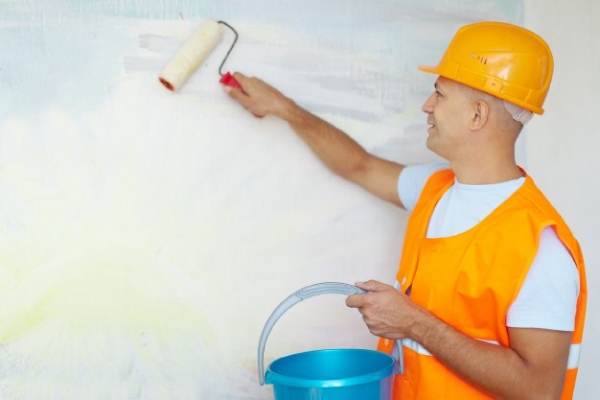
Roller cover is a fabric cylinder capable of being saturated with a liquid coating. The cylinder is mounted on the roller frame rod and it rotates about the cylinder. The quality of the roller cover will decide how well the finishing job will be. Special textured rollers may be used to produce decorative effects. Different types of finishes can also be achieved with different rollers. For e.g. A roller with smooth surface will give a smooth finish.
03. Paint by Pad Application
Spirit polish is applied by a pad, consisting of a tightly wedded piece of wool or gauze, surrounded by a piece of clean cotton fabric, which can be changed as and when it gets dirty. The fabric covering of the pad has thousands of tiny bristles which act like short versions of paintbrush bristles. Chain link or window grill can best be painted with a paint pad.

04. Paint by Spray Application
Spraying is often favoured because of its speed. Through the method of spraying, the job of painting is done in very less time compared to other methods. It is usually preferred for all jobs that require very smooth finish. The only thing is that, the labour cost involved in masking must be balanced against the savings in spray application. In an air spray system, compressed air is used to atomize the paint.
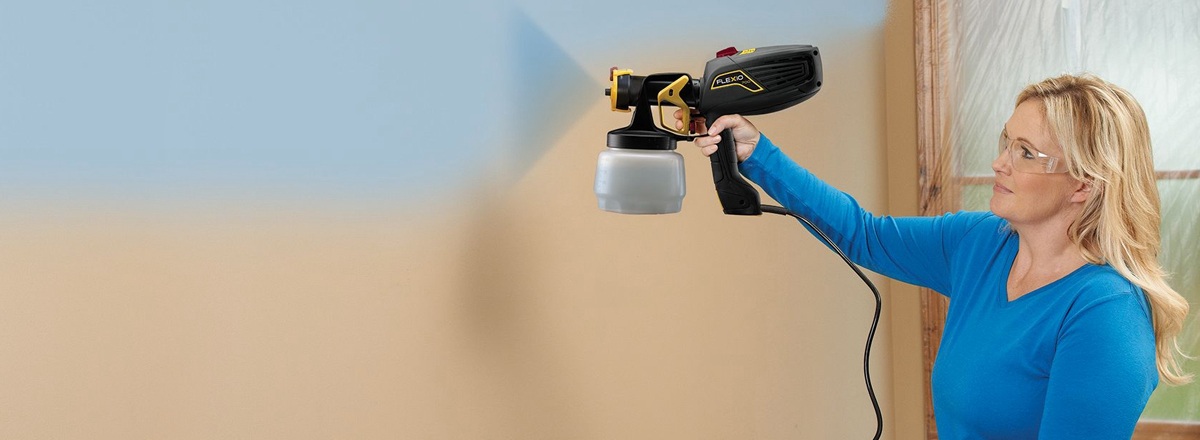
05. Putty Blade Application
The putty blade is also called stripping and filling knife. It is a steel blade which is used for stripping off the old paint and for filling putty to prepare the smooth surface.

06. Masking Tape Application
Masking tape is used when it is impossible to paint one surface (i.e. wall) without getting paint on an adjacent surface (a molding of door or window) and especially when a spray equipment is used. That is why covering and masking is an essential part of the finishing process. Masking tape provides a quick and easy means to cover up window or door frames. It can be time consuming at times but it protects surfaces and ensures sharp lines and straight edges.
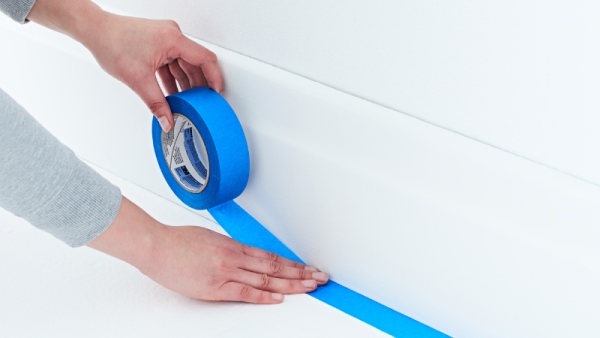
Qualities of an Ideal Paint
If paint is not of good quality, it will deteriorate early. The qualities of good paint are:
- When paint is applied to the surface, it should form a thin film of uniform nature on drying.
- It should give a pleasing and attractive appearance.
- Paint should have such a consistency that it can be easily applied on the given surface with a spraying device or brush.
- The paint must have a good spreading quality so that it covers a wide range of surface in minimum quantity.
- It must be easily available and its initial cost must be reasonable. It must prove economical in the long run.
- Paint should be such that it dries in a specific time, neither too fast nor too slow.
- Paint should not get affected by various atmospheric factors like water, heat, u/v radiation etc.
- An ideal paint should provide a perfect finish to your house and increase its value and aesthetics.
Types of Paint
According to ‘Martin Preston’ (Author of the book called Guide To Home Improvement), Types of paint you choose for your house is just as important as colours. There are so many types of paint available in the market. But not all the paints are suitable for all conditions and surfaces. Each type of a paint has its own unique quality and hence specific use.
Ultimately your choice matters! But you should make the choice wisely. Your need to take into consideration the surface that you want to cover, and the type of finish you want i.e. – glossy or flat? Smooth or textured? And, how much wear and tear the newly painted surface will have to endure?
From usage point of view, the paints are mainly categorised into two types:
The paints can be classified depending upon their use, properties, materials etc. However, here we are discussing mainly interior and exterior paints.
- Interior Paint
- Exterior Paint
01. Paints used for painting the interior parts of House – Interior Paint
Interior paint is used for aesthetics and decoration purposes inside the house. It contains low or zero VOC (Volatile Organic Compounds). It is essential in preserving the air quality in your home.
02. Paints used for painting the exterior parts of House – Exterior Paint
As the name suggests, exterior wall paints are used for painting the outside of building structures. These paints not only serve the decoration purpose but also protect the surface of building. Naturally, they possess properties and components that are different from those of interior paints. They are supposed to be flexible, capable of covering cracks and should have better u/v resistance.
Interior and exterior paints have similar solvents and pigments. However, exterior paint may contain more pigment than interior paint. The significant difference between interior and exterior paint is found in the additives and resins.
More than their technical name or type, most paints have become popular by their commercial brand names for instance “Apcolite” and so on.
We have discussed in detail about various types of paint, Refer:
Let us now understand the procedure of applying the paint.
Procedure of Applying Paint
To get the perfect painted surface, you need to follow the given procedure. Let us discuss the procedure step by step for application of paint:
01. Surface Preparation
Surface preparation is the basic step for applying any type of paint on a given surface. Whether you are applying paint on an old or new surface, surface preparation is a must. Remove the loose particles, dust, dirt or any other defects before applying the paint. Treat the surface with sandpaper and allow it to dry.
02. Wall Putty Application
Wall putty is a white cement-based powder which creates a smooth base for paint application. It provides even finish for paint application. It also acts as a filler as it fills cracks or patches on the wall. There are two types of putty: White Cement Putty & Acrylic Wall Putty
03. Primer Coat
Primer coat is basically a preparatory coat which is applied on the surface before the surface is painted. Thus, primer coat is a foundation of the paint job. It is a paint without pigment and is applied on both, the exterior as well as the interior surface. Different types of primers are available for different surfaces. For example, latex primer is used for wooden surface.
Most of the people are confused between primer and paint as they both look visually the same. But there is some difference between them. So, we have written an article which will clear your doubts, refer:
04. Undercoat
Undercoats or intermediate coats are one of the integral finish coats of the paint system. It basically provides a sealed and consistent surface to your paint. The main objective of undercoat is to build up adequate paint film thickness to decorate and protect the surface.
05. Topcoat
Topcoat is also termed as finishing coat. It acts as a basic barrier to the environment, provides toughness and charming look to the surface. It provides protection and resistance to chemicals, water, weather, dirt, scrubbing and staining. It gives the desired colour and finish to surface.
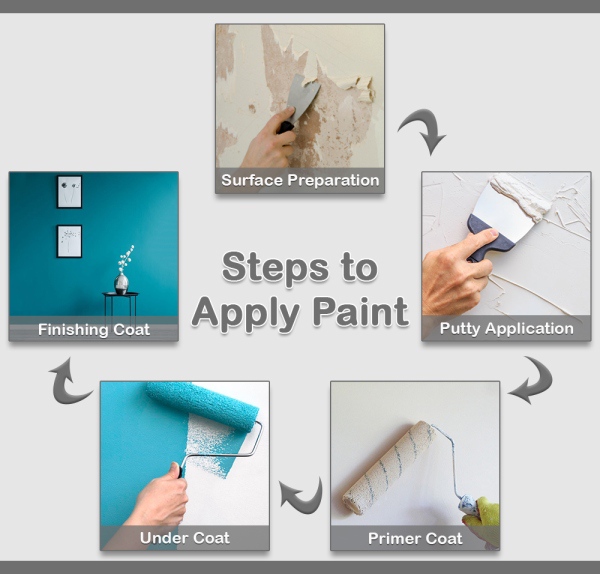
Paint Sheen & Paint Finishes
There is a slight difference between paint sheen and paint finish. The general appearance of the painted surface after drying is called paint finish. Paint sheen provides gloss or shine to the painted surface unlike an ordinary paint when it dries. Different types of paint sheen such as flat or matt finish, eggshell finish, satin finish, semi-gloss finish, gloss finish, etc are available.
If you want to know about more in detail about paint sheen and paint finishes, please refer our Article:
General Painting Sequence
For the convenience and better results, generally, a sequence needs to be followed for the process of painting. The usual sequence for painting a room is to start with ceiling, walls and later paint the door-window frame. When painting walls or ceilings, the edges especially where walls meet each other or a ceiling must be painted first. Ensure to use the tip of the brush and try not to overlap the application into adjacent areas. If you are finishing furniture, it is advisable to do this after the structural elements of the room are completed. This way, you can be confident of matching or complementing the primary colours of the room, which may alter as they dry.
Summing up, Home is a place where you get peace of mind; feel relaxed and comfortable after a long day work. Therefore, it is very essential to align the interior of your home with paint. Home interior plays a vital role in giving the best ambiance and relaxing environment. And hence, giving an appropriate colour to house can be one of the most challenging and contentious aspect of interior design.
According to ‘Charles Hemming’ (Author of the book Called Paint Finishes), Colour have an impact and they possess certain properties that can evoke particular feelings in a room. You may choose a colour scheme simply to change the character of your room or to create a certain atmosphere by means of colour characteristics.
Paint has greater versatility than any other surface finish and provides an easy way to dramatically change the look of a room. It not only offers infinite variety of colours and textures; but also imparts protection to the surface. Paints can be transparent or opaque and can create illusionary effect, offer images of objects that are not there.












































